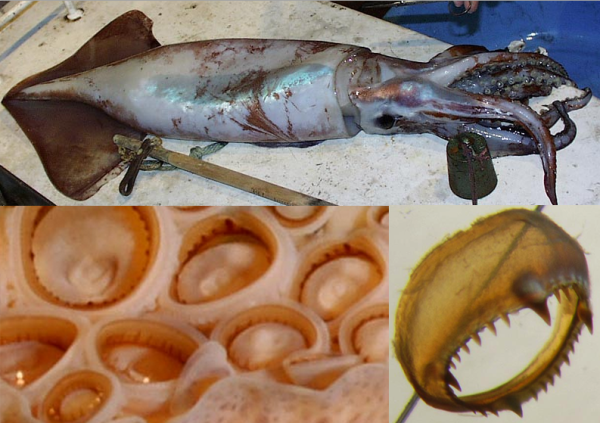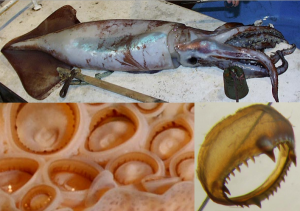Oh July 9th, 2015 a group of lucky divers happened upon something truly remarkable–A 4-meter-wide clear sphere floating off the coast of a small town in Turkey. The sphere was 22 meters below the sea surface, and even up close, it appears almost invisible. But what exactly is it?
The divers didn’t know. Lutfu Tanriover, the videographer, told me via Facebook the group felt a mixture of both excitement and fear as they approached the mysterious blob. The blow felt “very soft,” and looked gelatinous. But only after the video went online did the mysterious blob get a possible ID. Dr. Michael Vecchione of the Smithsonian Museum of Natural History was the first to propose a suggestion. Dr. Vecchione is an expert on squid, and to him this giant sphere looks like a huge squid egg mass, and it’s the largest he’s ever seen. In fact, egg masses like this may be floating off many major coasts, not just Turkey’s. But what kind of squid, specifically, could produce a mass this big?
Dr. Vecchione best guess? A large red flying squid named Ommastrephes bartramii. These animal can grow to around 1.5 meters (~5 feet) in length. As their name suggests, red flying squid can fly, or rather glide, by jetting out of the water and flatting their tentacles and fins to make “wings”. They’ve also got arms packed with suckers complete with razor-sharp teeth.
Top: A large red flying squid, bottom left: an arm with suckers, bottom right: a sucker with sharp “teeth” tolweb.org
But no one has actually seen a red flying squid lay eggs. Is the red flying squid even capable of producing an egg mass so big.
In all likelihood, yes. Only once has another egg mass this big been reported, and it belonged to one of the largest, most intelligent, and dangerous squid known. The humboldt squid is an oceanic velociraptor. Smart, strong, and agile, these 2-meter-long squid form packs, flashing quickfire communication to each other using specialized color-changing skin. In Spanish, humboldt squid are known as diablo rojo, or red devils. With a powerful parrot-like beak, and razor sharp barbs on their suckers, these squid have been documented to attack people. Their bite can break bones, and their strength can dislocate limbs. But they have a softer, gentler, squishier side.
In 2008, Danna Staaf and her colleagues documented, for the first time, a humboldt squid egg mass, which they found in the Gulf of California. It is the only egg mass known to rival the one divers found in Turkey. The egg mass Dr. Staaf described was between 3 and 4 meters long, making it the largest ever recorded in the scientific literature. And the number of eggs inside? Oh, between 600 thousand and 2 million–ten times more than any other squid ever recorded (PDF of paper). That’s a lot of baby squid. But if egg masses like these are so huge, and produced by a common species like the humboldt or red flying squid, why aren’t they washing up everywhere?
One possibility has to do with depth. These egg masses are likely found much deeper in the ocean and only occasionally drift to shallow water. Another factor is time. Dr. Staaf and colleagues found that the developing squid in the giant mass took just three days to hatch (PDF of paper). That’s a pretty small window to find such a well-hidden target.
Unlike their parents, newly hatched squid from an egg mass like this are tiny and underdeveloped. Like baby birds, their eyes are not fully formed. Even worse, according to squid expert Dr. Liz Shea of the Delaware Museum of Natural History, their predatory tentacles are fused together in a little clump when they’re born. They may not even be capable of hunting on their own. How they grow into large raptorial predators is a complete mystery. It is possible that, like the giant egg mass itself, these larvae are destined for deeper depths–hiding out of sight until they develop the skills and ability to hunt, and perhaps lay car-sized egg masses of their own.








